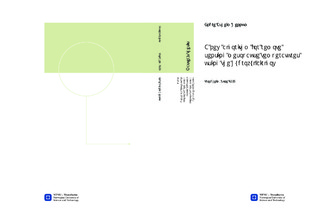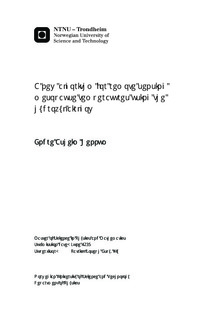| dc.description.abstract | Ground based measurements of the hydroxyl airglow started in Trondheim (63.4 N, 10.4 E) 20. November 2012 using a linear InGaAs PDA detector covering the ∼1450-1650 nm wavelength range. The instrument have suc- cessfully recorded data with a time resolution of 1 minute through the whole winter until 27th April 2013. A complete analysis scheme has been devel- oped to derive rotational temperatures from the (3-1) and (4-2) P-branch transitions. The method is based on least squares fitting a full synthetic model of the OH bands to the recorded spectrums.The analysis scheme has been used to analyse data for the whole measure- ment period during winter 2012/2013. Average temperatures for the period November-March are found to be 209.1 K and 207.6 K for the (3-1) and (4-2) band respectively. The nightly averaged temperatures generally follow the expected climatological trend of warm winter temperatures and cooling towards summer. In January, the temperatures rise to ∼230 K, which is a large deviation from predictions calculated with the MSISE model, but same pattern is also observed over Andøya (69.3 ◦N). The difference of 1.5 K be- tween the (3-1) and (4-2) temperature is consistent with model predictions of the intensity distribution of the v = 4 vibrational state beeing higher in altitude and therefore colder.Results from three nights have been analysed in more detail, revealing large variations in the OH airglow layer. The observed oscillations have peri- ods ranging from ∼30 minutes to several hours, and variations in rotational temperature up 47 K. Relative changes in the intensity is found to be typi- cally 4-5 times larger then in the temperature. Both the temparture and the intensity show a high level of covariation between the (3-1) and (4-2) bands, but the results are generally more accurate for the (3-1) transition, because the (4-2) P-branch is affected by a lower instrument sensitivity. Relative errors in the (3-1) temperature is typically between 1-2%.A detailed analysis of the analysis scheme is given, and some unresolved issues and possible improvements are suggested. The instrument and it?s operation is also desribed. | nb_NO |

